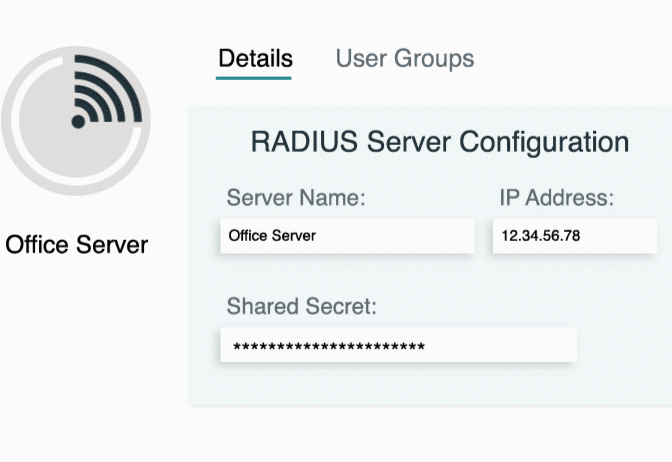Updated on May 21, 2025
The Destination IP Address is a key part of network communication, ensuring data reaches the correct device in an IP-based network. Here’s a quick look at its definition, function, features, and applications in networking.
Definition and Core Concepts
A Destination IP Address is the unique numerical label assigned to the receiving device on a network. Each IP address acts as an identifier for a specific device, ensuring seamless communication across devices using the Internet Protocol. Depending on the version of IP in use, it can be a:
- 32-bit address in IPv4 (e.g., 192.168.1.1)
- 128-bit address in IPv6 (e.g., 2001:0db8:85a3::8a2e:0370:7334)
The Destination IP Address is located in the header of every IP packet and directs the data’s flow through various routers and switches before arriving at the intended device. Here are the core concepts tied to the Destination IP Address:
- IP Address: Each device on an IP network has a unique address (IPv4 or IPv6) that serves as its identifier for communication.
- Receiver Identification: The Destination IP Address specifies which device on the network is the intended recipient of the data packet.
- Network Interface: Refers to the hardware or software connecting a device to a network. The Destination IP Address ensures the packet is delivered to the correct network interface.
- Packet Header: The Destination IP Address is included in the packet header, along with the Source IP Address, providing essential routing information.
- Routing: Routers use the Destination IP Address to determine how to forward the packet through the network to its endpoint.
- Source IP Address: Indicates the origin of the data packet, working with the Destination IP Address to enable two-way communication.
How It Works
The Destination IP Address plays a pivotal role in enabling computers and other devices to communicate effectively. Here’s a breakdown of how it works:
Assignment to Receiving Device
Every device connected to a network is assigned an IP address, either automatically by Dynamic Host Configuration Protocol (DHCP) or manually via static IP configuration. This address signifies the unique location of the receiving device within the network.
Inclusion in IP Packet Header
When a data packet is created, the Destination IP Address is inserted into the packet header. The header ensures that routers and switches along the packet’s path know where to forward it.
Use by Routers for Forwarding Decisions
Routers are responsible for determining the best path for the packet to travel through the network. Using routing tables and the Destination IP Address, routers forward the packet to the next appropriate node until it reaches its final destination.
Final Delivery to the Recipient
On reaching the recipient’s network, the packet is directed to the specific network interface associated with the Destination IP Address. From there, the data is interpreted by the device’s operating system or application.
Key Features and Components
The Destination IP Address is integral to all network operations. Its key features include:
Recipient Identification
The address pinpoints the exact device intended to receive the transmitted data, ensuring accurate delivery.
Essential for End-to-End Communication
Without the Destination IP Address, it would be impossible to route data from sender to receiver. It is the foundation of all digital communication across networks.
Routing and Switching
Networks rely on the Destination IP Address for routing and switching decisions, enabling efficient and organized data flow.
Subject to Network Address Translation (NAT)
To manage limited IPv4 address space, many networks use Network Address Translation (NAT). NAT maps private IP addresses to a public IP address, affecting the way Destination IP Addresses are resolved within networks.
Use Cases and Applications
Destination IP Addresses are integral to nearly every modern use of the internet and digital communication. Here are some common scenarios:
Web Browsing
Whenever you browse the internet and access a webpage, your device sends a request with the website’s IP address as the Destination IP Address.
Email Communication
Emails use Destination IP Addresses to ensure that mail servers direct your messages to the correct recipient, no matter where they are in the world.
File Transfer
Protocols such as FTP (File Transfer Protocol) rely on Destination IP Addresses to send files between devices on a network.
Remote Access
Applications like Remote Desktop Protocol (RDP) use Destination IP Addresses to connect users to servers or devices located halfway around the world.
Key Terms Appendix
Here are definitions of important terms related to Destination IP Address:
- Destination IP Address: The unique numerical label assigned to the receiving device in a data packet for its proper delivery.
- IP Address: A unique identifier for a device on a network, formatted as IPv4 or IPv6.
- Receiver: The intended device or endpoint in a network communication.
- Network Interface: The hardware or software connecting a device to a network.
- Packet Header: The portion of a data packet containing critical delivery information, including Source and Destination IP Addresses.
- Routing: The process of directing a data packet across networks using routers.
- Source IP Address: The unique identifier of the device sending the data packet.
- NAT (Network Address Translation): A technique that maps private IP addresses to a public IP address to enable devices on a private network to communicate with external networks.






